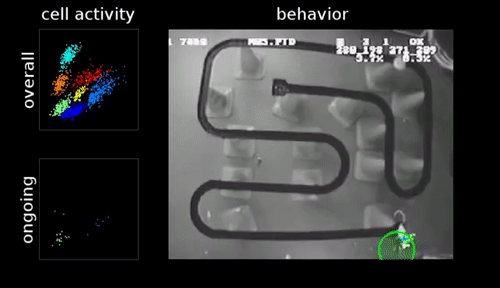Our brains constantly compute very complicated things in unintuitive ways to accomplish exceedingly normal and boring tasks. For example, in order to get to English class, I had to navigate here from Boelter Hall one way or another. For me to do that without a GPS device is (hopefully) trivial on a high level, but to comparatively build and program a device capable of doing that relying on only deep learning and image data, would be very challenging. People navigate by using incoming visual information to recognize patterns and landmarks in our environment, which dictate our actions and build us an internal path. But how can we do such a complex task so naturally? Researchers have found specific, individual cells in a region in the brain that have evolved to very quickly learn to activate only when you are in a single location. These cells do so by integrating visual and other incoming information, which cumulatively result in selective activation at only one place. Over time and through learning, you’re able to build a cognitive map, cell by cell, which continuously gets more or less precise based on your experiences. Although the full story is more complex, this one small aspect of spatial memory can start to describe just how difficult it is, to find your way to where we need to be.
Collected Thoughts
A cathartic place for my thoughts.
